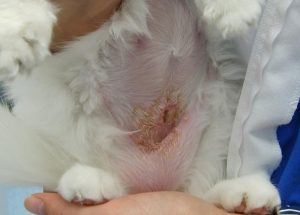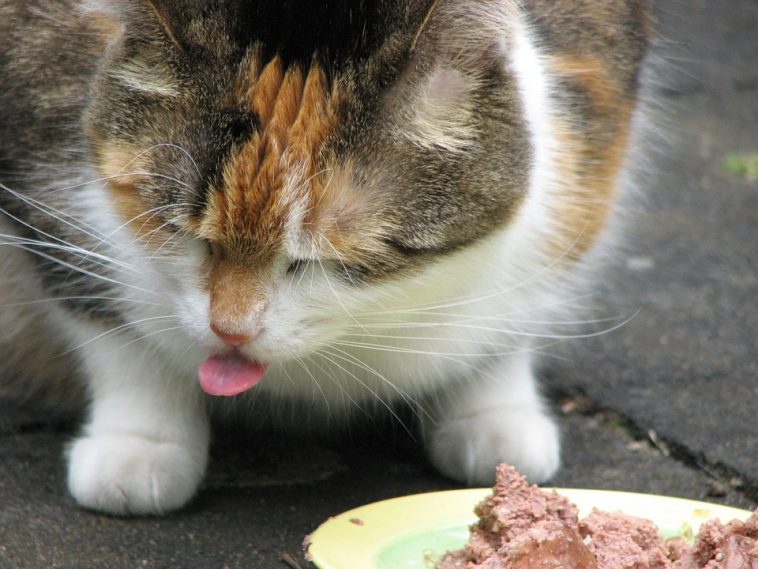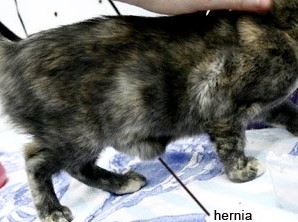
My cat won’t eat after being spayed!
My Cat Won’t Eat After Being Spayed. What could be the reason for this??
A cat won’t eat after being spayed, especially immediately after surgery, normally up to 24 hours. After that period of time, she should already start eating and drinking on her own and should be back to her normal active, happy, mischievous self in 2 to 3 days. A cat won’t eat after being spayed due to any or a combination of the following factors:- Nausea from the residual effect of the general anesthesia. Injectable anesthetics take some time to clear from the cat’s system and recovery time varies for individual cats, for some as long as 36 hours post-surgery. A good supply of oxygen helps to flush any inhaled aesthetics from the system. Extended recovery time might be due to poor oxygenation.
- A cat won’t eat after being spayed if it feels pain. Light anesthesia during surgery or no follow-up relief medicine given can cause pain afterwards. On the other hand some medication has sedation as side effect.
 A cat won’t eat after being spayed because of its new post-surgery accessory! Many feel irritated by the Elizabeth Collar and as a consequence will be likely to not eat. Those that don’t usually go in a confined in a cage will react in the same way.
A cat won’t eat after being spayed because of its new post-surgery accessory! Many feel irritated by the Elizabeth Collar and as a consequence will be likely to not eat. Those that don’t usually go in a confined in a cage will react in the same way.
- Your cat’s stomach may still be adjusting from the fasting she did prior to surgery and she may be a little dehydrated too.
All Cats React Differently to the Surgery
- Some cats are more sensitive than others. The process of recovering from general anaesthesia, regaining control of the voluntary functions, can be scary enough for some cats to make them not want to eat until they feels safe again.
- Concurrent medical conditions or subclini cal conditions, like worms and viral infections, may add to the stress of surgery making your cat feel tired and have no interest in eating. Respiratory infections can make the cat unable to smell its food and hence have no appetite to eat.
- If your cat won’t eat after being spayed, it may be due to a wound infection or surgical complication. This is normally the case if the starving lasts over 2 days.
What Can You Do At Home?
- Place the little patient in her bed in a warm, well-ventilated room and let her rest. Some cats just need to sleep off a bit the residual effects of anesthesia. Place a clean litterbox near her to encourage her to urinate. Urination help flush out the injectable anesthetics from her body and hasten recovery time.
- If you don’t have any instructions pertaining to post-surgery pain management, call up the veterinarian. Observe your cat for signs of pain like heavy, rapid breathing and vocalization. Most cats, however, are very stoic and endure pain silently so constantly check on her because if you don’t manage pain properly it might result to shock which can be fatal.
- Check with your veterinarian if the pain medication given to her may have sedation as a side effect. It might. be wise to discuss the possibility of placing her on a different medicine.
Dehydration Could Be An Issue
-
Check your cat for dehydration. Pull upward gently the loose skin at the scruff of her neck. It should go back down immediately. If it does not go down and instead forms a “tent” this is due to dehydration. If she has regained control of her swallowing, give her slowly small amounts of water using a dropper. You can also give her small amounts of wet food using the dropper or by placing a small amount on her paw for her to lick. Preferably use a prescription recovery diet because that is easier to digest and less likely to cause her an upset stomach.

Checking for dehydration by skin tenting.
- Alternatively, she could eat a vitamin paste that has a high calorie/energy content made specifically for patients who have no appetite. If she throws up water or food, call your veterinarian and bring her back. She might need to have an intravenous fluid infusion at the Vet to counter the dehydration and calorie depletion. Do not delay beyond 48 hours as dehydration and starvation may cause permanent damage to some organs.
- While your cat is still recovering from anesthesia, keep noise and activity around her to a minimum. Place her on her bed or an area padded with cushions to protect her if she cannot stand properly. Be there to reassure her but do not hover too much. Keep litterbox , food and water near her. I advise that you have a water fountain for cats ready to help encourage her to drink. It is important that she keeps hydrated.
Be Aware of Odd Behaviour
- If you suspect the problem that is causing her to have no appetite might be something unrelated to the spay surgery, then bring her back to the veterinarian for a check-up and prompt treatment.
- Most cats do not chew on their incision site and sutures unlike dogs. Therefore an Elizabeth collar is not mandatory but can be useful. Take off her Elizabeth collar and see if it improves her disposition and appetite. Likewise, do not confine her in a cage. Cage confinement will only depress her more and make her not use the litter box nor eat. Just keep her somewhere safe where she is not likely to have contact with infectious objects or open her wound.
-
Check for fever, one of the first signs of wound infection. Inspect the surgical site for inflammation, leaking fluids, missing sutures and other complications. If you see anything that does not look right, bring her back to the veterinarian immediately. The veterinarian may give her a shot of antibiotic, pain reliever and perhaps an appetite stimulant.

Check for infection and inflammation at the surgical incision site.


